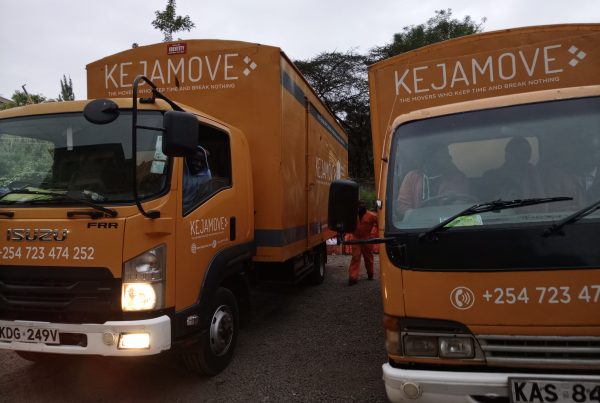Introduction
Moving to a new home can be both exciting and overwhelming, especially when it comes to local moves. Whether you’re relocating within the same city or moving to a different neighborhood in Kenya, proper planning and organization are key to ensuring a smooth transition. In this article, we will provide you with valuable insights and practical tips from KejaMove, a leading local moving company in Kenya, to make your local move a hassle-free experience.
1. Understanding the Importance of Planning
Before embarking on your local move in Kenya, it’s crucial to create a detailed plan. Start by determining your moving timeline and establishing a budget. Having a clear roadmap will help you stay organized throughout the process.
2. Sorting and Decluttering
Moving provides an excellent opportunity to declutter and get rid of unnecessary items. Go through your belongings and categorize them into three groups: keep, donate, and discard. This step will not only help you reduce the moving load but also ensure a fresh start in your new home.
3. Hiring a Reputable Local Moving Company
To ensure a smooth and stress-free local move, consider hiring a reliable local moving company like KejaMove. Do thorough research, read customer reviews, and request quotes from different companies. Choose a company that is licensed, insured, and has a proven track record of delivering exceptional service.
4. Packing Strategies and Supplies
Efficient packing is essential for the safety of your belongings during transit. Start packing well in advance, focusing on one room at a time. Use high-quality packing materials such as sturdy boxes, bubble wrap, packing tape, and packing paper. Remember to pack heavier items at the bottom and fragile items with extra padding.
5. Labeling and Organizing Boxes
Labeling your moving boxes is crucial for easy unpacking and organization in your new home. Clearly mark each box with its contents and the room it belongs to. This simple step will save you time and effort when you’re settling into your new space.
6. Taking Care of Valuables and Fragile Items
Certain items require special attention during a move. Jewelry, important documents, and fragile possessions should be packed separately and transported with care. Consider keeping valuable items with you during the move to minimize the risk of loss or damage.
7. Efficient Loading and Unloading
When it comes to loading and unloading the moving truck, prioritize efficiency and safety. Start by loading heavy items first, distributing the weight evenly. Use ramps, dollies, and straps to facilitate the process. Once you arrive at your new home, unload strategically by placing boxes and furniture in their respective rooms.
8. Furniture Disassembly and Assembly
If you have large furniture pieces, it’s advisable to disassemble them before the move. This will make transportation easier and prevent damage. Keep track of screws, bolts, and other hardware by placing them in labeled bags. Upon reaching your new home, follow the assembly instructions or seek professional help if needed.
9. Communication with the Moving Team
Maintaining open and clear communication with the moving team is crucial. Provide them with any relevant details about your move, such as specific instructions or any fragile items that require extra care. Address any concerns or questions you may have to ensure a seamless moving experience.
10. Utilities and Address Change
Before moving into your new home, make sure to transfer or set up utilities such as electricity, water, and internet services. Additionally, notify relevant parties about your address change, including the post office, banks, insurance companies, and subscriptions you receive.
11. Cleaning and Preparing Your New Home
Take the opportunity to clean your new home before unpacking. Wipe down surfaces, vacuum or sweep the floors, and ensure the space is ready for your belongings. This will create a fresh and welcoming environment for you and your family.
12. Unpacking and Setting Up
When unpacking, start with essential items first, such as bedding, kitchen essentials, and toiletries. Take your time to arrange furniture and decorate your new space. Remember, it’s not a race; focus on creating a comfortable and functional home at your own pace.
13. Managing Post-Move Adjustments
Moving to a new home can be an adjustment, especially if you’re unfamiliar with the area. Take time to explore your new neighborhood, meet your neighbors, and discover local amenities. Embrace the change and allow yourself to settle into your new surroundings.
14. Ensuring Proper Insurance Coverage
To protect your belongings during the move, it’s important to have proper insurance coverage. Consult with your moving company or insurance provider to understand your options. Consider additional coverage if needed, especially for valuable or sentimental items.
15. Celebrating Your Successful Local Move
Congratulations! You’ve successfully completed your local move in Kenya. Take a moment to celebrate and appreciate your accomplishment. Treat yourself to a special meal, invite friends and family over, or simply relax and enjoy your new home.
Conclusion
Moving to a new home in Kenya doesn’t have to be stressful. By following these top tips for a smooth local move, you can navigate the process with ease. Remember to plan ahead, declutter, hire a reputable local moving company like KejaMove, and stay organized throughout the entire journey. With proper preparation and the right mindset, your local move will be a positive and exciting experience.
FAQs (Frequently Asked Questions)
1. How long in advance should I start planning for my local move in Kenya?
It’s recommended to start planning your local move at least two to three months in advance. This will allow you ample time to research moving companies, sort through your belongings, and create a detailed moving timeline.
2. Can I pack my belongings in garbage bags instead of boxes?
While it may be tempting to use garbage bags for packing, it’s not the most suitable option. Garbage bags can tear easily and don’t provide adequate protection for your belongings. It’s best to use sturdy boxes and packing materials specifically designed for moving.
3. What should I do with perishable items during a local move?
Perishable items such as food, plants, and frozen goods are best consumed or given away before the move. It’s challenging to transport perishables safely over a short distance, and they may spoil or cause damage to other items in transit.
4. Do I need to be present during the loading and unloading process?
While it’s not mandatory, it’s advisable to be present during the loading and unloading process. Your presence allows you to provide guidance to the movers, answer any questions they may have, and ensure that your belongings are handled with care.
5. Is it necessary to update my address with all service providers before the move?
Yes, it’s important to update your address with all relevant service providers before the move. This includes utility companies, financial institutions, healthcare providers, and any subscriptions or memberships you hold. Updating your address ensures a smooth transition and avoids any inconvenience.


